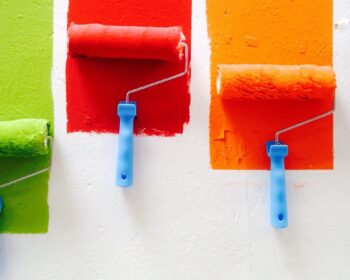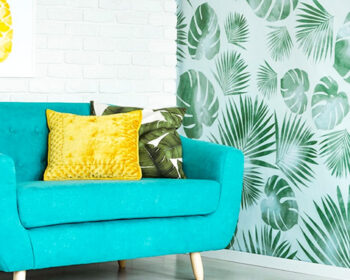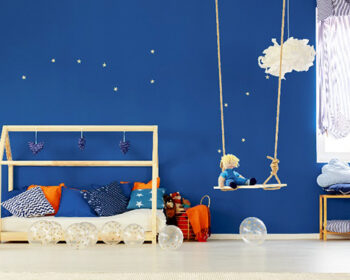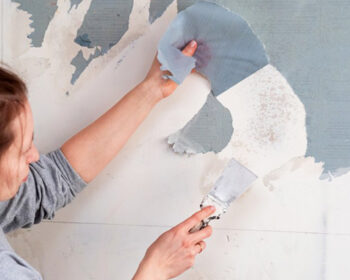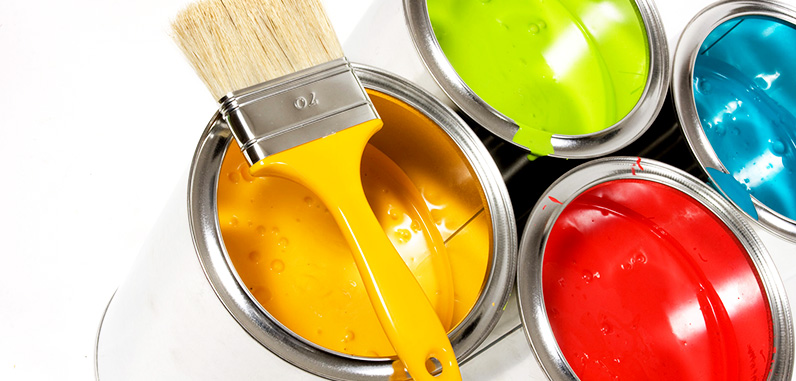
Types of Paint Finishes and when to Use Them!
Selecting the wrong paint finish selection might result in a costly redo. When selecting paint sheens, keep the following in mind: Higher sheens provide higher shines, and higher shines produce more durable products. Flat paint has no shine; high-gloss is all shine. Eggshell, satin, and semi-gloss fill in the gaps between and serve different functional and aesthetic purposes.
High Gloss
Among all paint sheens, high-gloss paint is the strongest, ultra-shiniest, and most easily cleaned. Think tough like appliance paint. Cabinets, trim, and doors are suitable candidates for high gloss since they will be touched by greasy fingers. However, high-gloss is excessively shiny for interior walls. High shine also displays every lump and curve like a Spandex dress, so don’t cut corners on preparation.
Semi-Gloss
Excellent for areas where walls are challenged by dampness, drips, and grease stains. They work best in areas that get a lot of wear and tear or moisture, such as children’s rooms, kitchens, and bathrooms since they are incredibly resilient and mildew-resistant. They work well for trimming, too. They will display flaws more than less sparkly paints because of their glossier surface.
Satin
The most typical interior paint finish is satin. They are a fantastic option for high-traffic spaces like kitchens, playrooms, family rooms, bathrooms, and laundry rooms since they have a velvety sheen and are simpler to clean than flat and eggshell paints. (Before using a satin paint, keep in mind that their shine is unfortunately more likely to show brush strokes, making touch-ups later on a little more challenging.)
Eggshell
The eggshell paint finish has a subtle shine and is mildew and dirt resistant. Eggshell, which is essentially a flat (no-shine) finish with little lustre, like a chicken’s egg, sits between satin and flat/matt on the paint sheen levels scale. Eggshell has a medium durability and well conceals wall defects. The dining room, bedrooms, and living room are good examples of meeting places that don’t get a lot of bumps and scuffs.
Matte Finish
Matte finish is practically as shine-free as flat, offering good hiding and colour depth while being somewhat more durable. Another low lustre, medium-durability reflecting finish is matte finish paint. A matte paint finish conceals small surface flaws and is simple to clean and touch up. is excellent for regions with low to moderate usage, including the walls of adult bedrooms (not children).
Flat and matte paint finishes contain the most pigment and will give the most coverage. They work well on walls with surface flaws because they absorb light rather than reflect it.
When considering flat paint for high-traffic areas that need frequent maintenance, use care. Low-sheen paint makes it more difficult to remove stains, and frequent rubbing or washing may cause the paint to flake off with the dirt.
What to Consider When Choosing a Paint Finish
There are a few things all Melbourne house painters consider when choosing the most suitable paint finish:
- Traffic. The quantity of traffic your space will experience is arguably the most crucial factor to take into account when choosing a paint finish. While calmer spaces like dining rooms may get away with eggshell or even flat paints, busy spaces like kitchens and playrooms can benefit from more durable finishes like satin and semi-gloss.
- Paint sheen. The lustre of paint finishes is classed, ranging from flat no-shine finishes to extremely glossy high-gloss finishes. A slightly higher-gloss finish will perform better than a matte finish if you’re trying to assist brighten a dull area since the quantity of light that each finish reflects back into the room will depend on how shiny they are.
- Surface imperfections. The more shiny a finish is, the more surface flaws in the object you’re painting will be visible. Consider using a less glossy paint if you wish to paint a wall that has several nail holes or patches; it will help cover up those imperfections and keep the wall looking smooth.

